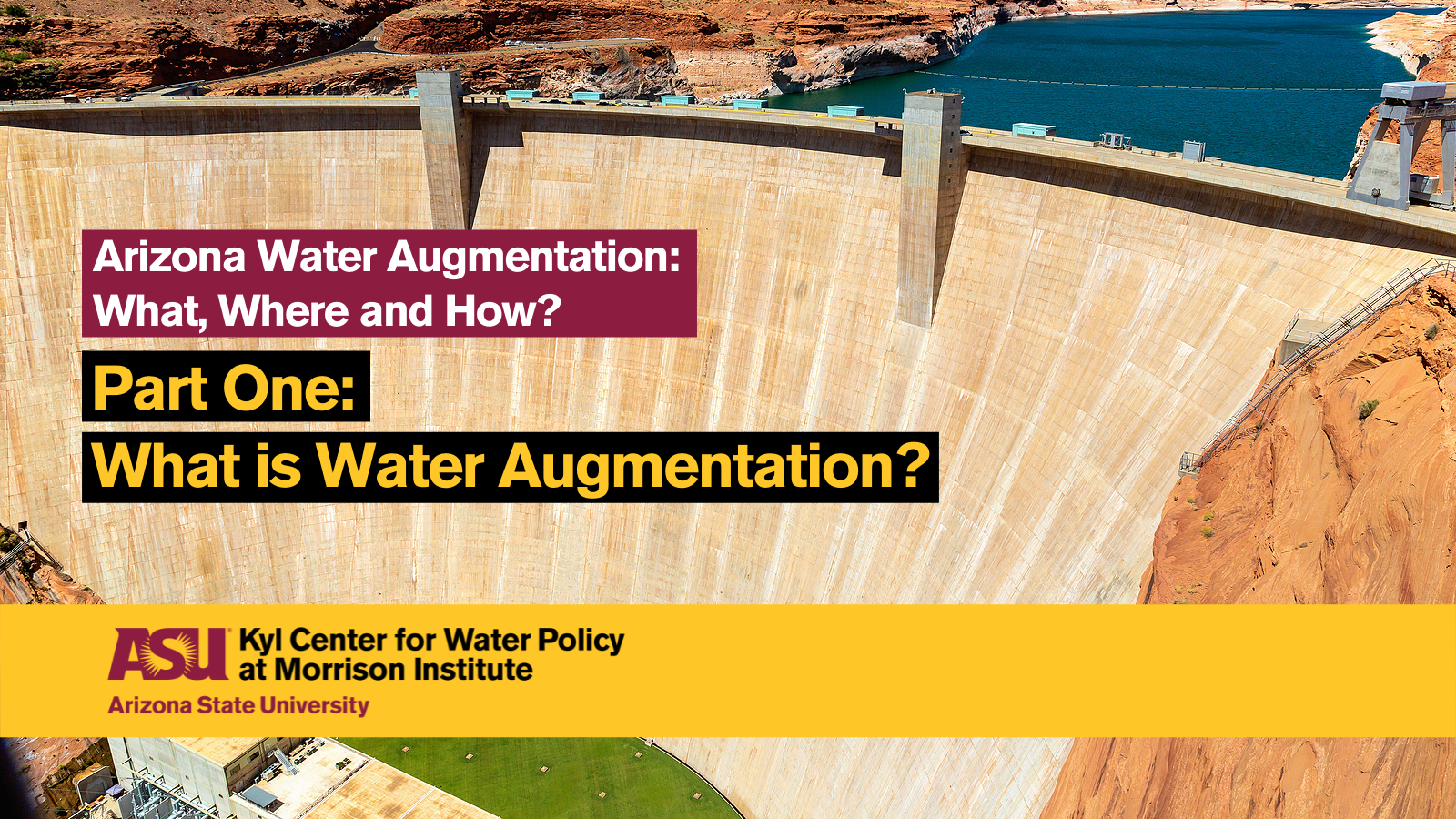
What is Water Augmentation?
The recent Colorado River shortage declaration has generated a lot of discussion about whether Arizona could and should acquire additional water supplies. Throughout early 2022, the Kyl Center for Water Policy at Morrison Institute will be diving into this topic. This is part one in the series, "Arizona Water Augmentation: What, Where and How?" The series is available here.
augment (verb): to make greater, more numerous, larger, or more intense augmentation (noun): the act or process of augmenting something
Merriam-Webster.com
The amount of water on our planet is fixed and continually moves through a cycle of evaporation, condensation, sublimation, precipitation, transpiration, runoff, and infiltration into the ground.* We can't really make more water. We can only move it, change its use, alter its quality, or store it.
From time to time, local and regional water providers, states, or even entire sections of the country need additional water supplies to meet water needs. Water augmentation refers to the effort to secure additional supplies for a current or future group of water users.
Water augmentation generally involves the following:
- Moving water from one place to another place it would not naturally go (for example, moving Colorado River water into Central Arizona),
- Improving the quality of an existing water supply to make it available for a different purpose (for example, treating wastewater or desalinating seawater for industrial or other uses),
- Converting water from one use to another (for example, fallowing farmland so that the water previously used for irrigation can instead be used by residences and non-farm businesses),
- Capturing or storing water that would otherwise not be used or would flow somewhere else (for example, harvesting rainwater or storing water behind dams or in underground aquifers), or
- Some combination of these things.
Water augmentation projects anchor the western states' economies, ensuring reliable water supplies for major cities, including Albuquerque, Denver, Las Vegas, Los Angeles, Phoenix, San Diego, San Francisco and Tucson, and supplying water for agriculture and industry. Water augmentation can be complicated and controversial. Projects to re-allocate water, transport it from one place to another or hold water back from where it would otherwise flow can require large infrastructure investments, complex financing and new governance structures. Augmentation projects involve trade-offs for communities, economies and the environment. In this blog series, we will explore some of the considerations involved in water augmentation projects.

Kyl Center resources to learn more about water augmentation in Arizona:
- The Augmentation Concepts Story Map, housed on the Kyl Center's Arizona Water Blueprint website, details 16 proposed Arizona water augmentation projects.
- This version of the Arizona Water Blueprint's comprehensive map shows the proposed augmentation projects and major infrastructure in the state.
- Activating the augmentation layer (signified by an icon of a building with a water droplet inside it) on the Arizona Water Blueprint's comprehensive map provides access to data layers showing proposed water augmentation projects throughout the state.
- Activating the infrastructure layer (signified by an icon of pipes) on the Arizona Water Blueprint's comprehensive map provides access to Central Arizona Project and Salt River Project canals, dams and reservoirs, and other infrastructure.

The Kyl Center for Water Policy at Morrison Institute is dedicated to seeking water solutions. The Kyl Center's work is made possible by the generosity of institutional and individual donors. Learn more about supporting the Kyl Center with a financial contribution.